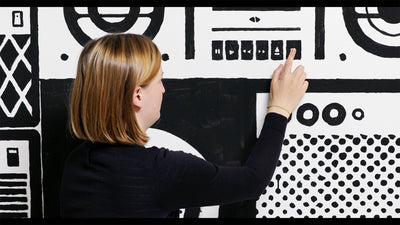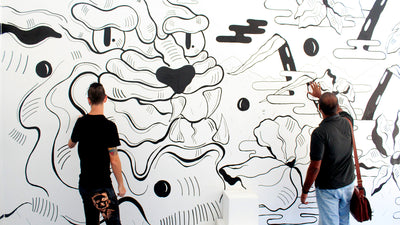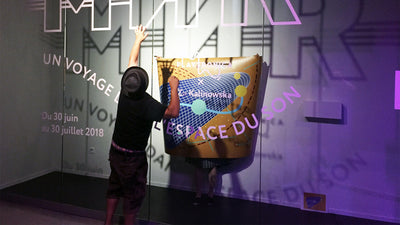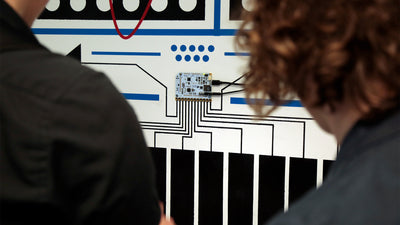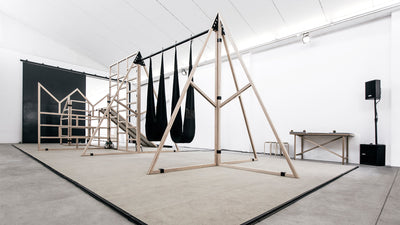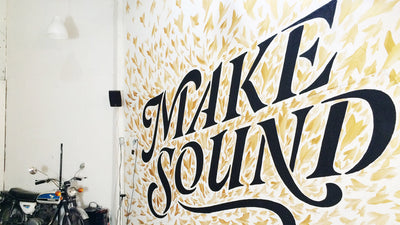Liquid MIDI - A flexible MIDI controller on textiles

A beautiful, flexible MIDI interface made from Electric Paint and fabric by EJTech, an art and technology lab based in Budapest.
Esteban de la Torre and Judit Kárpáti make up EJTech, an art and technology lab based in Budapest. They produce beautiful work exploring the boundaries between textiles, sound and electronics, and have recently been screen printing Electric Paint to create flexible MIDI controllers on fabric. The team used an Arduino Mega ADK to communicate with Max MSP and Ableton Live to play MIDI notes when touched, an action also achievable with the Touch Board. We caught up with EJTech to find out more.
Can you tell me a bit about your research into printed electronics and sound?
We work a lot in the intersection between sound and textiles. We've noticed there are many fascinating parallels between these two mediums. It can be a big challenge when it comes to integrating electronics onto a flexible, bendable fabric– primarily making sure it is both functional and durable, especially when it will be purposed as a user interface, where pounding, pressing and jamming into it are bound to happen. Secondly there is the challenge of aesthetics, so it is advantageous to be able to screen print or draw your working circuits onto virtually anything.
So how did you come across Bare Conductive?
We first worked with Bare Conductive while trying to screen print a working audio speaker. Electric Paint was not chosen for this purpose in the end, and even though we did achieve our goal of screen printing a working speaker we also learned and that we really enjoyed working with Electric Paint. Its clean and easy to use, non-toxic and awesome for screen printing. Plus it comes in deep space black!
Where did the idea to create ‘Liquid MIDI’ come from? What were you trying to achieve?
One of our main focus is researching Human Computer Interaction. Plus a bit beyond this, we love investigating the idea of how, while vision distances and separates us from the world surrounding us, the rest of the senses unite us to it , and the repercussions of this integration is a more coherent perception of reality. Man has not always been dominated by vision, but for this piece we had a strong graphical vision, and wanted to build a sort of post-internet object. As counterintuitive as it may seem, the digital is constantly gaining ground in the physical world.
Its interesting to listen to the music we created with Liquid MIDI (Liquid Midi is a modular controller and only the first two modules are shown in the video) and notice how John Cage questions the difference between modernism and postmodernism in the lyrics.
You've worked with thermochromic inks as well as MIDI and sound. How did you combine the features of Electric Paint with this technology and what was the output?
With the thermochromic inks, we used more robust actual hard wires of distinct alloys. As turning electric current into heat can be a very inefficient process, where you need a large amount of electrical energy to get a little amount of heat, we choose alloys of high resistance to get the most out of this energy transfer.


